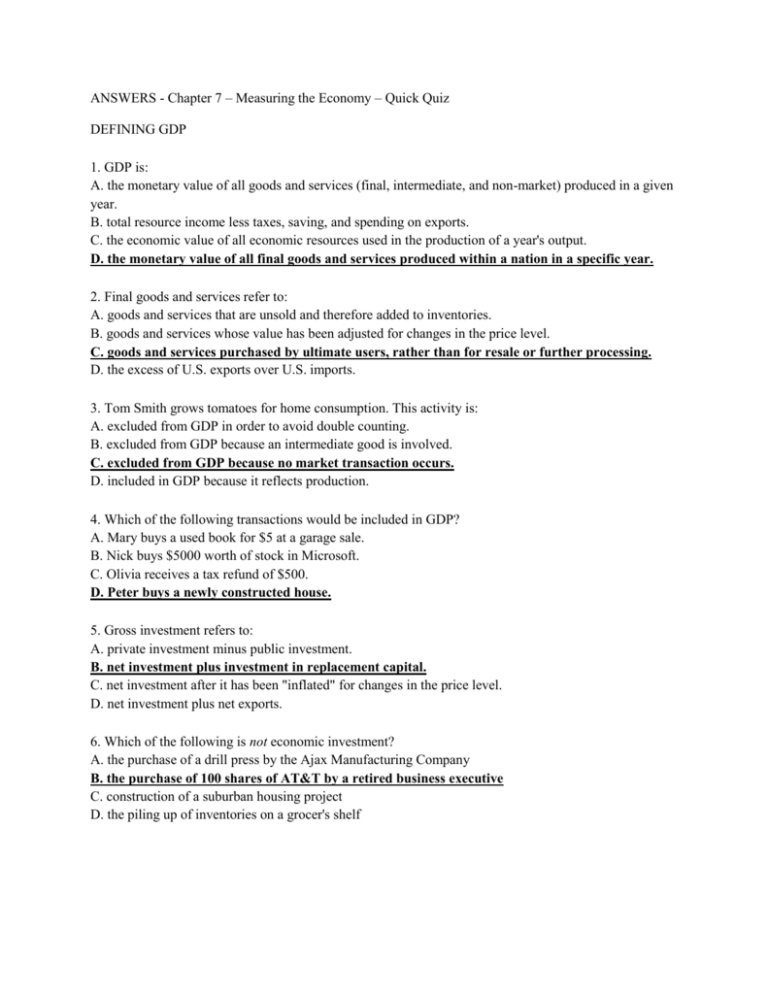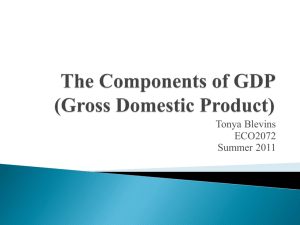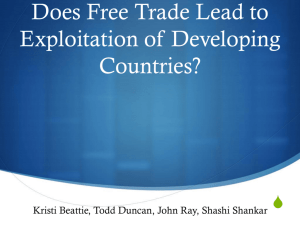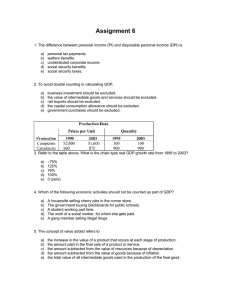qqch7defgdpanswers
advertisement

ANSWERS - Chapter 7 – Measuring the Economy – Quick Quiz DEFINING GDP 1. GDP is: A. the monetary value of all goods and services (final, intermediate, and non-market) produced in a given year. B. total resource income less taxes, saving, and spending on exports. C. the economic value of all economic resources used in the production of a year's output. D. the monetary value of all final goods and services produced within a nation in a specific year. 2. Final goods and services refer to: A. goods and services that are unsold and therefore added to inventories. B. goods and services whose value has been adjusted for changes in the price level. C. goods and services purchased by ultimate users, rather than for resale or further processing. D. the excess of U.S. exports over U.S. imports. 3. Tom Smith grows tomatoes for home consumption. This activity is: A. excluded from GDP in order to avoid double counting. B. excluded from GDP because an intermediate good is involved. C. excluded from GDP because no market transaction occurs. D. included in GDP because it reflects production. 4. Which of the following transactions would be included in GDP? A. Mary buys a used book for $5 at a garage sale. B. Nick buys $5000 worth of stock in Microsoft. C. Olivia receives a tax refund of $500. D. Peter buys a newly constructed house. 5. Gross investment refers to: A. private investment minus public investment. B. net investment plus investment in replacement capital. C. net investment after it has been "inflated" for changes in the price level. D. net investment plus net exports. 6. Which of the following is not economic investment? A. the purchase of a drill press by the Ajax Manufacturing Company B. the purchase of 100 shares of AT&T by a retired business executive C. construction of a suburban housing project D. the piling up of inventories on a grocer's shelf











